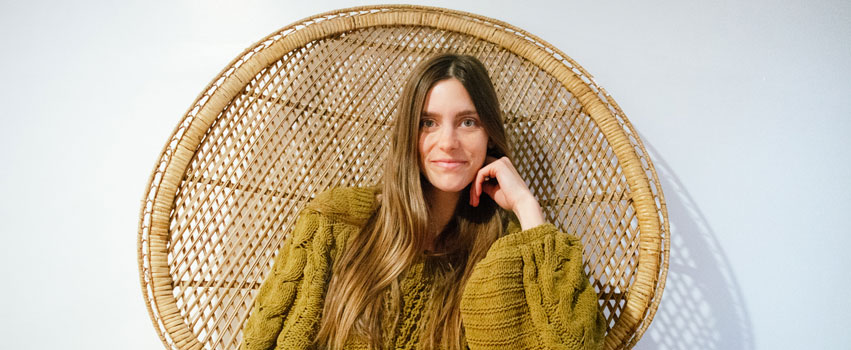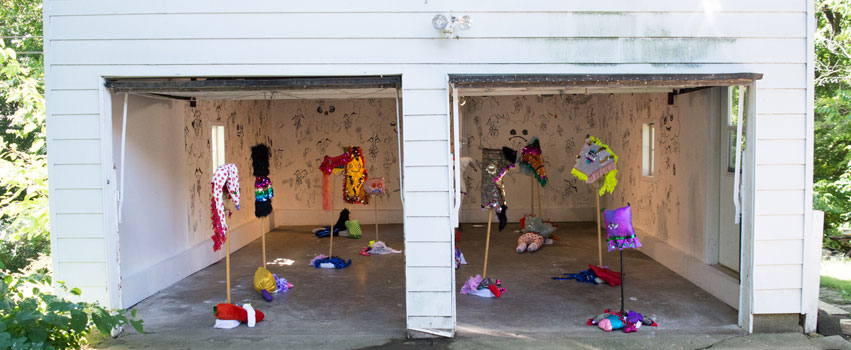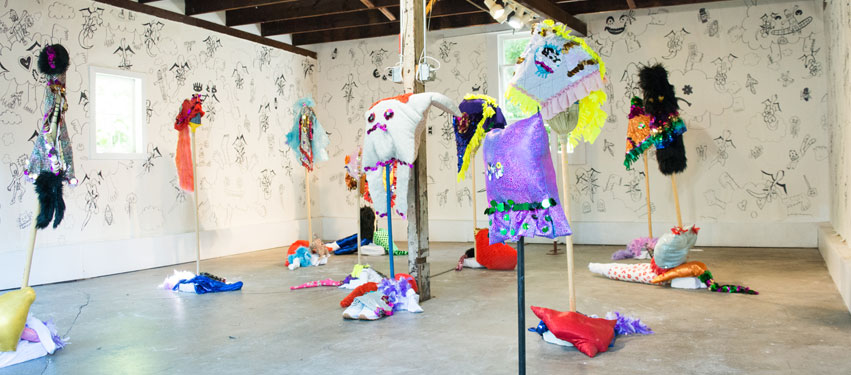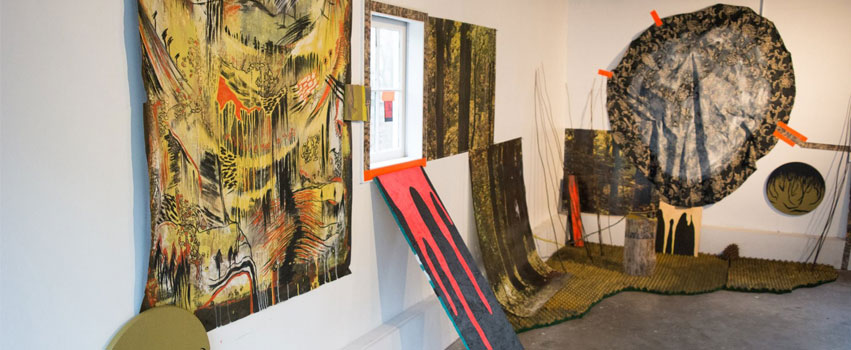
When Project 1612 first opened in August of 2015, I had no idea how our community would respond, who would walk through our doors, or how it would lead to a career as a curator. I was open to everything. The possibilities of the space were exciting, as we renovated our detached garage into an eclectic alternative gallery with an exposed wooden ceiling, an aged cement floor, and clean white walls. However, the most important aspect of this endeavor was the artists who would visit and work at my home—bringing contemporary, experimental, site-specific work to Peoria.
I was thrilled to be collaborating with my husband, Zach Ott, and fellow artist and friend, Alexander Martin, but I was terrified that the whole endeavor would fail. As an artist, I have learned that failure is an integral part of the field—failed work, unaccepted grants and proposals, rejection from exhibitions—so by that time, failure was just as much a part of my studio practice as the making of work.
Let me provide some insight into what Project 1612 actually is. We are a short-term artist residency and independent, alternative exhibition space located in the garage at my home. The residency spans four to five days, during which time the artist makes work, explores Peoria, does research and installs an exhibition in the garage. At the end of each residency, the artist has an exhibition; these are only up for the span of the reception—just a couple hours—and are free and open to the public.

As the years progressed, Project 1612 has grown to include artist talks, film screenings, public conversations, published art reviews, panel discussions and presentations, artist interviews and studio visits, and an internship program. Through cofounding and directing this space, I have learned many things about myself as a curator and artist—but also as a hostess, friend and creative entrepreneur.
- Curating Project 1612 is more than just exhibitions. It is making sure the artist feels welcome in my home and in the community. While sadly we are unable to pay our artists, I have found that warm meals and a clean room go a long way. A huge part of my curatorial practice is making sure artists feel comfortable, safe and supported. Creating a welcoming home has always been important to me, but curating at my home made me realize just how significant it is to fostering a creative work environment and conversation.
- I developed an appreciation and love for art that I might not have before. Prior to starting Project 1612, I didn’t venture out much from the art I liked. I have found that my eye has changed—more like broadened—and I am more likely to spend time looking at work that I might have grazed over in years past. I am not talking about a specific exhibition at Project 1612, but rather art in general, including visits to major art museums and galleries.
- Conversations are crucial. We don’t always have time to host artist talks, so creating an environment in which visitors feel comfortable talking directly with the artist is so important to us. The openings feel like a party as people usually hang out in the backyard or on the sun porch. Considering the exhibitions can only be viewed for a few hours during the opening, it is important to have the artist on-site to interact with the public and answer questions about their work.

Eric Anthony Berdis’ Trot, Tiptoe, Gallop, September 2018. - We have to consider the Peoria art community when selecting artists. Artists often are experimenting with different mediums, concepts, socially engaged work, interactive installations, performances and new media. We also consider artists who respond to Peoria and develop a conversation in their work based on Peoria’s past or current history. But the most important part of our jurying process is making sure we bring a variety of work that interests different kinds of tastes. When jurying work for the year, we (the exhibition cofounders and interns) take into consideration how each month will flow into the next; for instance, we would not show two performances or painters in a row. Variety is what keeps it interesting for our viewers—but also engaging for me as a curator.
- Failure is not black and white, it is not negative, and it does not define us. The first year was filled with many trials and errors, which thankfully resulted in creative solutions, better opportunities and a deeper understanding of our purpose. For instance, when Project 1612 began, artists were personally invited—which, as one can imagine, took a large amount of time researching, emailing and developing relationships. As art students, our network was small and limited. Since then, we have opened a free juried call for artists and curate based on those submissions only. As an alternative space, we have a lot of flexibility to try and fail, and I anticipate many more years of experiments, failures and happy successes. PM
Visit project1612.com for more information, and learn more about Jessica Bingham's artwork at jessicabinghamart.com.


- Log in to post comments

